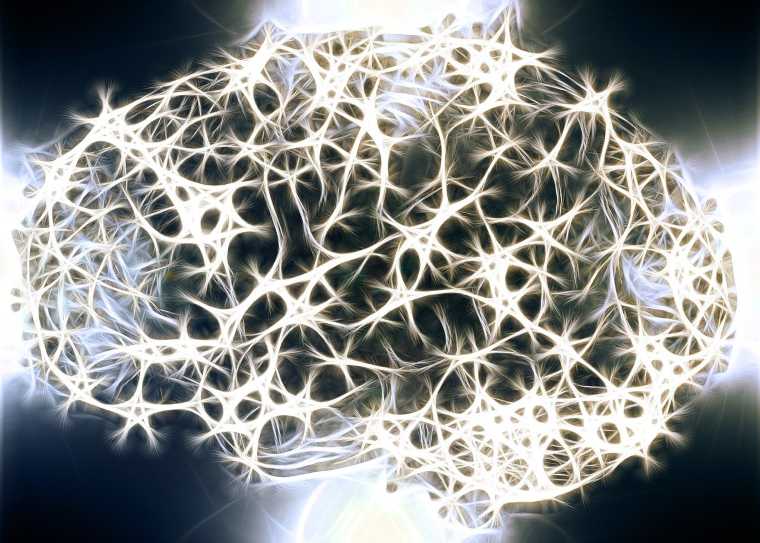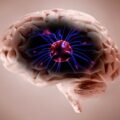Duke University scientists studying a potential mind-body connection have discovered a unique form of direct neural communication between microscopic organisms living in the digestive system and the human brain, which acts as a kind of “neurobiotic” sixth sense, allowing the brain to know when to eat.
Described by the research team as a “neurobiotic sense” that operates beyond the traditional five senses of sight, hearing, smell, taste, and touch, this newly discovered sixth sense could advance understanding of how gut microbe communication influences appetite, mood, and other mental health components.
The work may also reveal how the brain responds to these signals by shaping the microbiome community in return. It may also help inform how humans could potentially reverse engineer this sixth sense through diet.
Hunting For a Possible Sixth Sense Between Microorganisms in the Body and the Brain
When humans eat food, several of the body’s biological systems begin to immediately respond. One recent example is breakthrough GLP-1-based weight loss medications, such as Ozempic, Wegovy, Mounjaro, and Zepbound, which mimic some of these chemical signals to reduce appetite and increase satiation.
One related field of study involves understanding how the community of microorganisms living in the human body, particularly the digestive system, can indirectly affect chemical signaling between the body and the brain. This microorganism-based brain-gut connection has led to several discoveries hinting at a similar connection between the digestive microbiota and the brain, affecting both mental and physical health. Still, much of that connection has been connected to body changes caused by the gut’s microbiome, such as inflammation that the brain can sense and react to, given the circumstances.
To determine if this connection was all indirect or if the body could directly detect microbial activity in real time to function as a previously undiscovered neurobiotic sixth sense, Duke University School of Medicine neuroscientists Diego Bohórquez, PhD, and M. Maya Kaelberer, PhD the team focused specifically on appetite-suppressing signals that cue the brain to stop eating.
“We were curious whether the body could sense microbial patterns in real time and not just as an immune or inflammatory response, but as a neural response that guides behavior in real time,” explained Bohórquez, a Duke University School of Medicine professor of medicine and neurobiology and senior author of the study detailing the team’s findings.
Joined by lead study authors Winston Liu, MD, PhD, and Emily Alway, both graduate students in the Medical Scientist Training Program, and postdoctoral fellow Naama Reicher, PhD, the team devised a series of laboratory experiments to investigate any potential neurobiotic connection related to appetite. If successful, these experiments could reveal a direct microbial influence on the brain, rather than an indirect one.
Experiments Target Microorganism Communication
With support from the National Institutes of Health, they started by targeting what they described as an “ancient protein” found in the tail-like structures bacteria use to swim, called flagella. Because the team already knew some gut bacteria release this particular protein, called flagellin, when food is consumed, they decided to test whether neuropods were detecting it and sending signals directly to the brain. If so, they would have compelling evidence of a sixth sense made possible by microorganisms living within the human body.
First, the research team tested their hypothesis by fasting lab mice overnight. After delivering doses of flagellin directly to the subject’s colons, the team fed them. As hoped, the mice that were given the flagellin ate less than the control mice.
A follow-up experiment tested the same idea, only with mice missing the TLR5 receptor within the neuropods, which they suspected was a critical component of this sixth sense communication. According to the statement, when the TLR5-deficient mice were given flagellin and then fed, “nothing happened.” The mice ate normally and gained weight, indicating that the vagus nerve pathway, which helps regulate appetite, was potentially being influenced by the presence of flagellin in genetically normal mice.
According to the statement, the team suspects the presence of flagellin caused this neurobiotic sixth sense to tell the brain, “We’ve had enough.” Without this receptor, the message would not be transmitted.
Next Steps Will Explore the Influence of Specific Diets on Gut-Brain Connection
Up next, the researchers suggest exploring these connections further to potentially identify even more communication pathways between the brain and the body that operate outside the traditional five senses. The team also suggests exploring how human behavior can affect the microbiome, potentially opening the possibility of using dietary changes to treat mental health and behavioral conditions.
“One clear next step is to investigate how specific diets change the microbial landscape in the gut,” Bohórquez said. “That could be a key piece of the puzzle in conditions like obesity or psychiatric disorders.”
The study “A gut sense for a microbial pattern regulates feeding” was published in Nature.
Christopher Plain is a Science Fiction and Fantasy novelist and Head Science Writer at The Debrief. Follow and connect with him on X, learn about his books at plainfiction.com, or email him directly at christopher@thedebrief.org.


